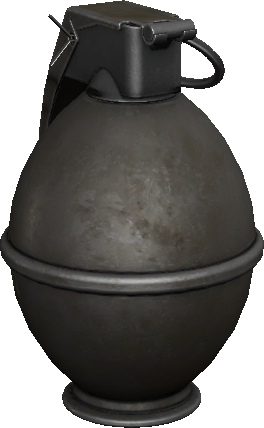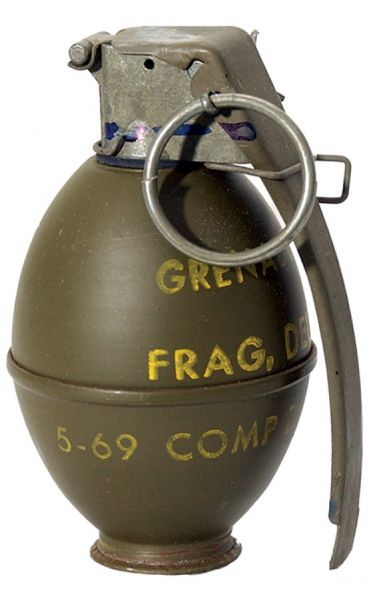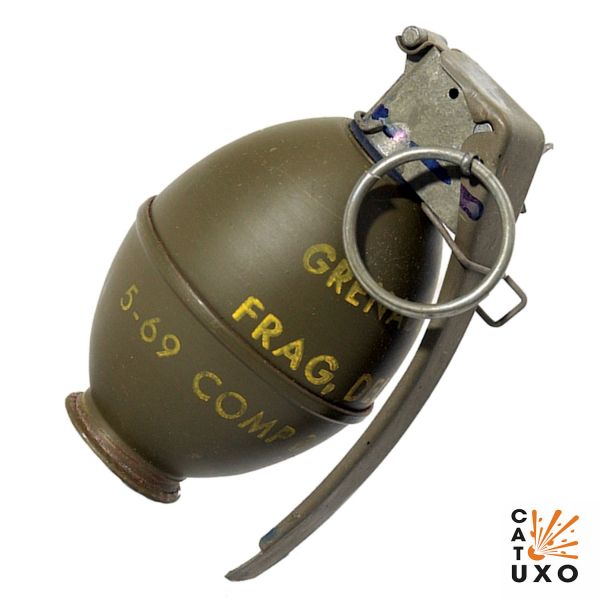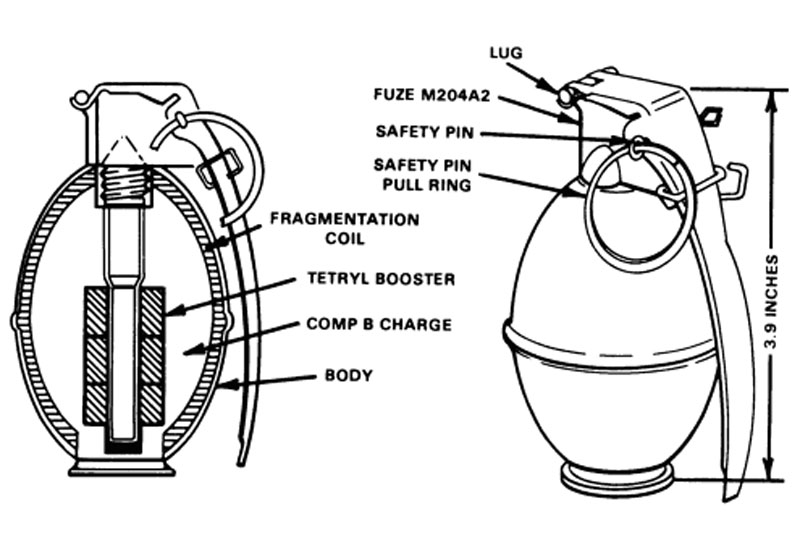M26 Frag Grenade
| Factions | Frag Grenades | Icon | Classes | Ammo | Explosion | |
|---|---|---|---|---|---|---|
| Damage | Radius | |||||
 US |
 M26 Frag Grenade |
 |
1 / 2 | 140 | 350 | |
| Designation | Weapon Type | Fire Modes | Throwing Range | Weight |
|---|---|---|---|---|
| M26 | Grenade | 3 Sec + 5 Sec | 25 meters? | 1 kg (2.2 lbs) |
| Full name | Ammo Type | Place of Origin | Date | Manufacturer | Total Length | Weapon Script Name |
|---|---|---|---|---|---|---|
| Grenade, Hand, Fragmentation, M26 | frag grenades | USA | 1952 | Denel Rheinmetall Munitions | 3 7/8 in (99 mm) | weapon_m26 |
The M26 is a fragmentation hand grenade developed by the United States military. It entered service around 1952 and was used in combat during the Korean War. Its distinct lemon shape led it to being nicknamed the "lemon grenade" (compare the Russian F1 grenade and American Mk 2 "pineapple" grenade, with similar nicknames).
HISTORY
The M26 was developed as a result of studies on the Mk 2. Unlike its previous counterpart, its M204A1 fuse creates no tell-tale smoke or sparks when ignited and its powder train is almost silent while it burns down. Its Composition B filler was considered safer than the flaked or granular TNT filling used in the Mk 2.
The M26 series was created after World War II to meet criticisms of the Mk 2. The original M26 replaced the Mk 2 Fragmentation Grenade as Army standard issue in Korea. Massive World War II production left the Mk 2 as limited standard issue with the US Army and US Marines throughout the 1960s and the US Navy until the 1970s. The M26A1 / M61 was the primary fragmentation grenade used by American forces in the Vietnam War.
The M26 series (M26/M61/M57) was replaced by the M33 series grenade (M33/M67) at the end of the Vietnam War.
SOURCE


